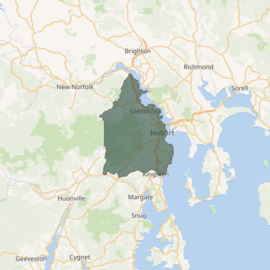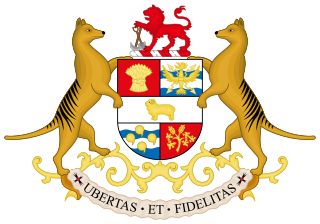
The House of Assembly, or Lower House, is one of the two chambers of the Parliament of Tasmania in Australia. The other is the Legislative Council or Upper House. It sits in Parliament House in the state capital, Hobart.

In Australia, electoral districts for the Australian House of Representatives are called divisions or more commonly referred to as electorates or seats. There are currently 151 single-member electorates for the Australian House of Representatives.

Sandy Bay is a suburb of the city of Hobart, Tasmania, Australia, located immediately south of the central business district, and adjoining the suburb of Battery Point. Sandy Bay is bounded on the east by the Derwent River, and has several beaches along the shore, the main beaches with public access are Nutgrove Beach and Long Beach.

The Parliament of Tasmania is the bicameral legislature of the Australian state of Tasmania. It follows a Westminster-derived parliamentary system and consists of the Governor of Tasmania, the Tasmanian House of Assembly, and Tasmanian Legislative Council. Since 1841, both Houses have met in Parliament House, Hobart. The Parliament of Tasmania first met in 1856.

The Division of Bass is an Australian electoral division in Tasmania.

The Division of Braddon is an Australian electoral division in the state of Tasmania. The current MP is Gavin Pearce of the Liberal Party, who was elected at the 2019 federal election.

The Division of Forrest is an Australian Electoral Division in Western Australia.

The Division of Franklin is an Australian electoral division in Tasmania.

The Division of Lyons is an Australian electoral division in Tasmania.
The Division of Wilmot was an Australian Electoral Division in the state of Tasmania. It was located in central Tasmania, and was named after Sir John Eardley-Wilmot, the sixth Lieutenant-Governor of Tasmania. At various times it included the towns of Deloraine, Beaconsfield, Devonport, Latrobe, and New Norfolk.
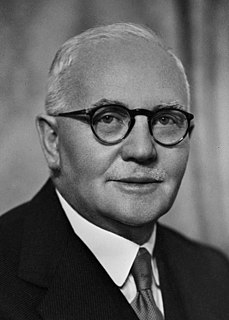
Sir Robert Cosgrove was an Australian politician who was the 30th and longest-serving Premier of Tasmania. He held office for over 18 years, serving from 1939 to 1947 and from 1948 to 1958. His involvement in state politics spanned five decades, and he dominated the Tasmanian branch of the Australian Labor Party for a generation.
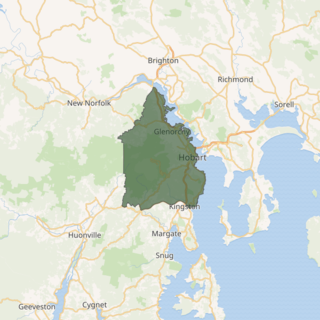
The electoral division of Denison was an electorate of the Tasmanian House of Assembly from 1909 to 2018. It was located in Hobart on the western shore of the River Derwent and includes the suburbs below Mount Wellington. Denison was named after Sir William Denison, who was Lieutenant Governor of Van Diemen's Land (1847–55), and Governor of New South Wales (1855–61). The electorate shared its name and boundaries with the federal division of Denison. The seat was abolished in September 2018 and replaced by the Division of Clark, in line with its federal namesake.

The electoral division of Lyons is one of the five electorates in the Tasmanian House of Assembly, it is the largest electorate covering most of central and eastern Tasmania. Lyons is named jointly in honor of Joseph Lyons, Prime Minister of Australia (1931–1939); Premier of Tasmania (1923–1928), and Joseph's wife, Dame Enid Lyons, the first woman elected to the Australian House of Representatives in 1943. The electorate shares its name and boundaries with the federal division of Lyons.
In Australia, a redistribution is the process of redrawing the boundaries of electoral divisions for the House of Representatives arising from changes in population and changes in the number of representatives. There is no redistribution for the Senate as each State constitutes a division, though with multiple members. The Australian Electoral Commission (AEC), an independent statutory authority, oversees the apportionment and redistribution process for federal divisions, taking into account a number of factors. Politicians, political parties and the public may make submissions to the AEC on proposed new boundaries, but any interference with their deliberations is considered a serious offence.
The 1909 Tasmanian state election was held on Friday, 30 April 1909 in the Australian state of Tasmania to elect 30 members of the Tasmanian House of Assembly. At the 1909 election there was a reduction in the number of members from 35 to 30 and the first statewide use of the Hare-Clark proportional representation system — six members were elected from each of five electorates. The election saw an increase in Labour seats from 7 to 12, at the expense of the Anti-Socialist Party.

The 1946 Tasmanian state election was held on 23 November 1946 in the Australian state of Tasmania to elect 30 members of the Tasmanian House of Assembly. The election used the Hare-Clark proportional representation system — six members were elected from each of five electorates.

The 1950 Tasmanian state election was held on 6 May 1950 in the Australian state of Tasmania to elect 30 members of the Tasmanian House of Assembly. The election used the Hare-Clark proportional representation system — six members were elected from each of five electorates.
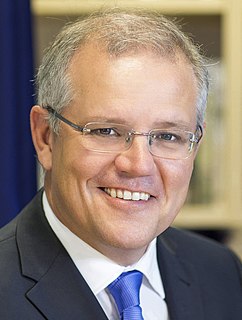
The 2019 Australian federal election was held on Saturday 18 May 2019 to elect members of the 46th Parliament of Australia. The election had been called following the dissolution of the 45th Parliament as elected at the 2016 double dissolution federal election. All 151 seats in the House of Representatives and 40 of the 76 seats in the Senate were up for election.

The Division of Clark is an Australian Electoral Division in the state of Tasmania, first contested at the 2019 federal election.

The electoral division of Clark is one of the five electorates in the Tasmanian House of Assembly, it is located in Hobart on the western shore of the River Derwent and includes the suburbs below Mount Wellington. Clark is named after Andrew Inglis Clark, a Tasmanian jurist who was the principal author of the Australian Constitution. The electorate shares its name and boundaries with the federal division of Clark, and was created in September 2018 to replace the state division of Denison.
